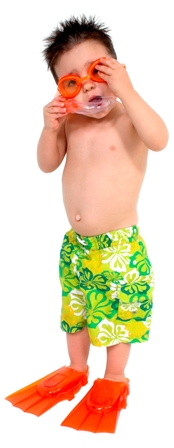Salt Chlorine GeneratorsA Salt-Chlorine generator is based on an electrolysis process during which Sodium Chloride is converted to Sodium Chlorine by passing across metal plates enclosed in a chamber (referred to as “salt cell”) which is installed in-line on swimming pool plumbing. These metal plates are energized by a low electrical current which causes the electrolysis process of ion exchange of chloride to chlorine.At present, Salt-Chlorine generators are very popular in the United States for installation on residential swimming pools, and have been for approximately five years. They surfaced in the market previously a number of years ago as well, but faded in popularity nearly as quickly as they appeared. There are several issues with these type units: “Maintenance” and “Misconception” by pool owners. Maintenance: The metal plates have a tendency to calcify which requires periodic cleaning with Hydrochloric acid (Historically called Muriatic acid). Hydrochloric acid must be handled with appropriate safety precautions because it is a highly corrosive solution with special risk to soft tissues such as the eye. Salt cells are also very costly when they need replacement. Another maintenance issue with swimming pools using these type systems is the need to frequently adjust pH levels. There are also situations where the demand for Chlorine due to either high organic load (bather load, tree pollen, rain) or high ambient temperatures, can not be adequately maintained by the generator itself requiring addition of Chlorine or algae control products. A good solution to this problem in pools that already have Salt-Chlorine generators installed is to add an Ozone Joe’s Ozone Generator to reduce organic load, allowing the chlorine generator to run at a lower output rate. One key drawback of Salt-Chlorine generators, especially those working in higher demand pools, is the corrosive effects. Salt in itself is corrosive and the effects of corrosion are a major point of customer dissatisfaction of pool owners with Salt-Chlorine generators. Research has shown that even stainless steel is susceptible to corrosion at 3,500 ppm. Pool ladders and other metal fixtures are affected by salt and the process is further enhanced by the low current being applied to the Salt-Chlorine generators plates. This is especially noticeable where dissimilar metals are joined. The corrosion process is known as “Galvanic” or “two-metal corrosion”. Although fiberglass and vinyl liner pool surfaces may develop some issues, they may not experience the same damage that some builders report witnessing on concrete pool walls. In addition to the damage under the water level of the pool, there are also numerous issues reported with decking materials such as costly sandstone surfaces being damaged. Misconception: Many pool owners are under the misconception that they have a “Chlorine free pool” when using Salt-Chlorine generator technology. After all, it is a saltwater pool, right? Wrong! Although the swimming pool does contain salt, and there is a smooth feel to some like salt in the Ocean (though these pools have less than ten percent equivalent of the salt in the ocean), the pool is Not Chlorine Free. The very purpose of this system is to produce Chlorine in the pool, without the physical handling of Chlorine. In addition, as our society continues to move toward a more environmentally friendly stance, future legislation may require additional remediation requirements on saltwater pools as the backwashing of saltwater pool filters may be of concern to local vegetation, drainage systems, and the aquifers in some geographic locations. |

